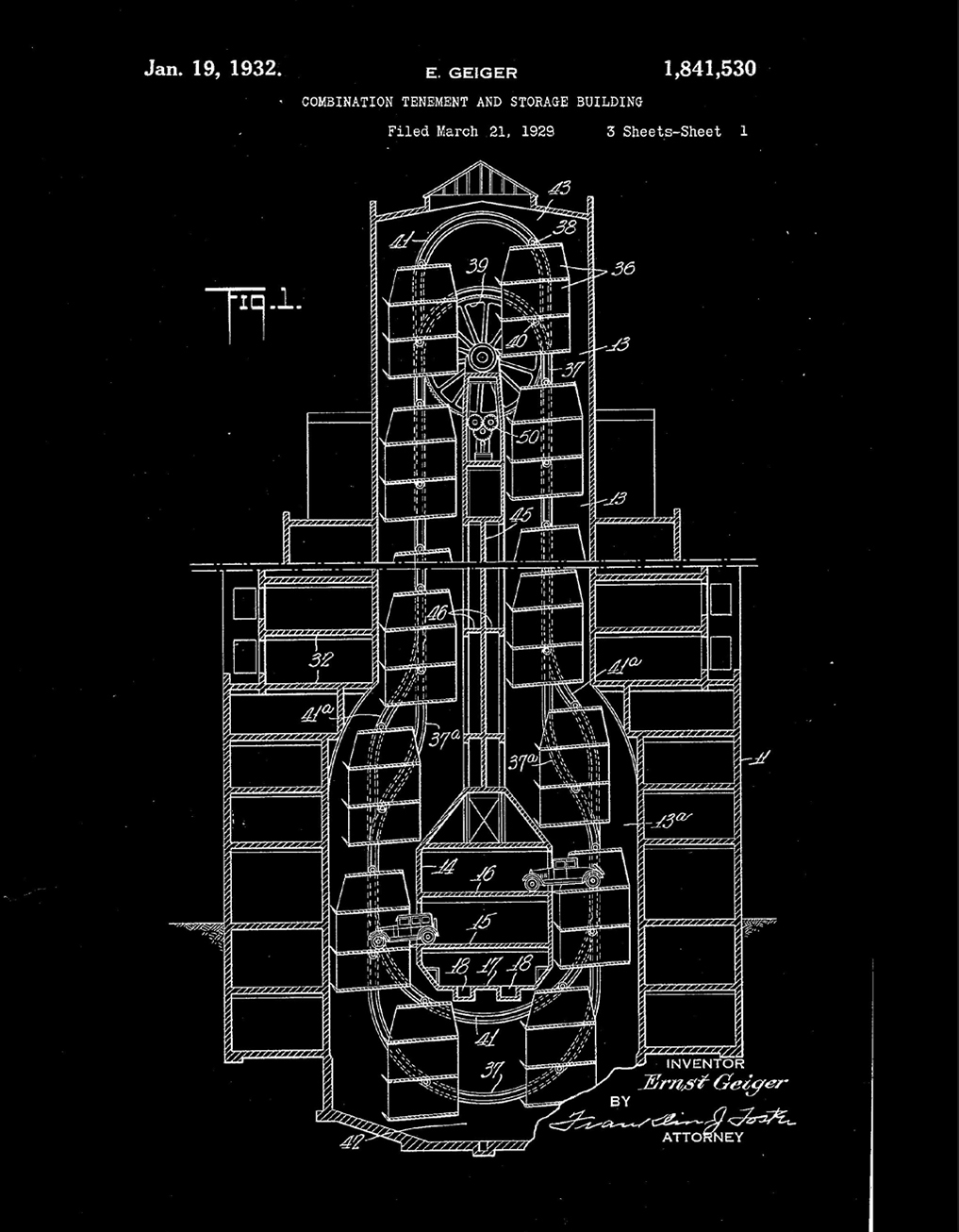Hybrid Patent Forms

Kate Altmann, Page Comeaux / 2019
Yale School of Architecture
Logistical industries rely on large data sets in order to maintain a competitive position in the marketplace. While vast data centers process and store billions of gigabytes of invaluable information sets, they are often located far from urban centers. The infrastructural demands of these data centers, lead to inefficiencies and waste in the form of materials, and energy.
In emerging prototypes, the waste of data centers is seen instead as a valuable resource. In Stockholm, data parks are run in partnership with the city's environmental agency (Fig. 1) to produce heat. They were expected to generate enough heat to warm 2,500 residential apartments by 2018, and meet 10% of the entire heating need of Stockholm by 2035 [1]. Other corporate entities, like the French computing company Qarnot, have explored waste heat reuse at the domestic scale, with wall-mounted “crypto heaters” (Fig. 2) that generate heat while mining cryptocurrencies.
While these hybrid types of logistics infrastructures vary greatly in scale, they raise the question: how might the inefficiency of logistics be utilized productively when considered in parallel to growing pressures on housing?
![]()
Fig. 1 Fig. 2
Recent developments in logistics have already changed the way domestic space is organized as delivery models have led to redundancies in the clustering of retail in cities. Moreover, retail is increasingly disappearing from the ground floor of residential streetscapes, leaving us to ponder over the future status of the urban ground floor. Our study seeks to discover how a pairing of logistics landscapes and residential space might produce new typologies or hybrids to increase the resilience of both respective types.
![]() Fig. 3
Fig. 3
It is here that we look to patents and patent drawings as the source of inspiration and raw material for the project. Historically, patents operate in an inherently hybridized fashion, building upon accrued knowledge through that which has already been patented to create something “new” or “improved.” Amazon has, for example, patented technology or sytems that are not yet possible, such as its subterranean package conveyor belt, in an effort to speculate on the future of its own logistics infrastructure.
The extraordinary availability of patent documents online then makes it possible for us to exploit the practice of patent generation for speculation on the hybridization of housing and logistics typologies. Our investigation culminates in a tool [3] which enables the production of new typologies by placing a range of patents for both logistics and housing side by side. The tool takes advantage of the graphic similarities created by the standardization of the patent drawing, which enables the viewer to draw similarities between patents across time and scales. When the user finds two patents which they believe to be compatible, they may combine the pairing, generating a new, serendipitous patent which they can use to create a new typology.
Visit Website ↗
Yale School of Architecture
Logistical industries rely on large data sets in order to maintain a competitive position in the marketplace. While vast data centers process and store billions of gigabytes of invaluable information sets, they are often located far from urban centers. The infrastructural demands of these data centers, lead to inefficiencies and waste in the form of materials, and energy.
In emerging prototypes, the waste of data centers is seen instead as a valuable resource. In Stockholm, data parks are run in partnership with the city's environmental agency (Fig. 1) to produce heat. They were expected to generate enough heat to warm 2,500 residential apartments by 2018, and meet 10% of the entire heating need of Stockholm by 2035 [1]. Other corporate entities, like the French computing company Qarnot, have explored waste heat reuse at the domestic scale, with wall-mounted “crypto heaters” (Fig. 2) that generate heat while mining cryptocurrencies.
While these hybrid types of logistics infrastructures vary greatly in scale, they raise the question: how might the inefficiency of logistics be utilized productively when considered in parallel to growing pressures on housing?

Fig. 1 Fig. 2
Recent developments in logistics have already changed the way domestic space is organized as delivery models have led to redundancies in the clustering of retail in cities. Moreover, retail is increasingly disappearing from the ground floor of residential streetscapes, leaving us to ponder over the future status of the urban ground floor. Our study seeks to discover how a pairing of logistics landscapes and residential space might produce new typologies or hybrids to increase the resilience of both respective types.
 Fig. 3
Fig. 3It is here that we look to patents and patent drawings as the source of inspiration and raw material for the project. Historically, patents operate in an inherently hybridized fashion, building upon accrued knowledge through that which has already been patented to create something “new” or “improved.” Amazon has, for example, patented technology or sytems that are not yet possible, such as its subterranean package conveyor belt, in an effort to speculate on the future of its own logistics infrastructure.
The extraordinary availability of patent documents online then makes it possible for us to exploit the practice of patent generation for speculation on the hybridization of housing and logistics typologies. Our investigation culminates in a tool [3] which enables the production of new typologies by placing a range of patents for both logistics and housing side by side. The tool takes advantage of the graphic similarities created by the standardization of the patent drawing, which enables the viewer to draw similarities between patents across time and scales. When the user finds two patents which they believe to be compatible, they may combine the pairing, generating a new, serendipitous patent which they can use to create a new typology.
Visit Website ↗
1. Biba, E. (2017, October 13). Future - The city where the internet warms people's homes. Retrieved March 10, 2019, from http://www.bbc.com/future/story/20171013-where-data-centres-store-info---and-heat-homes